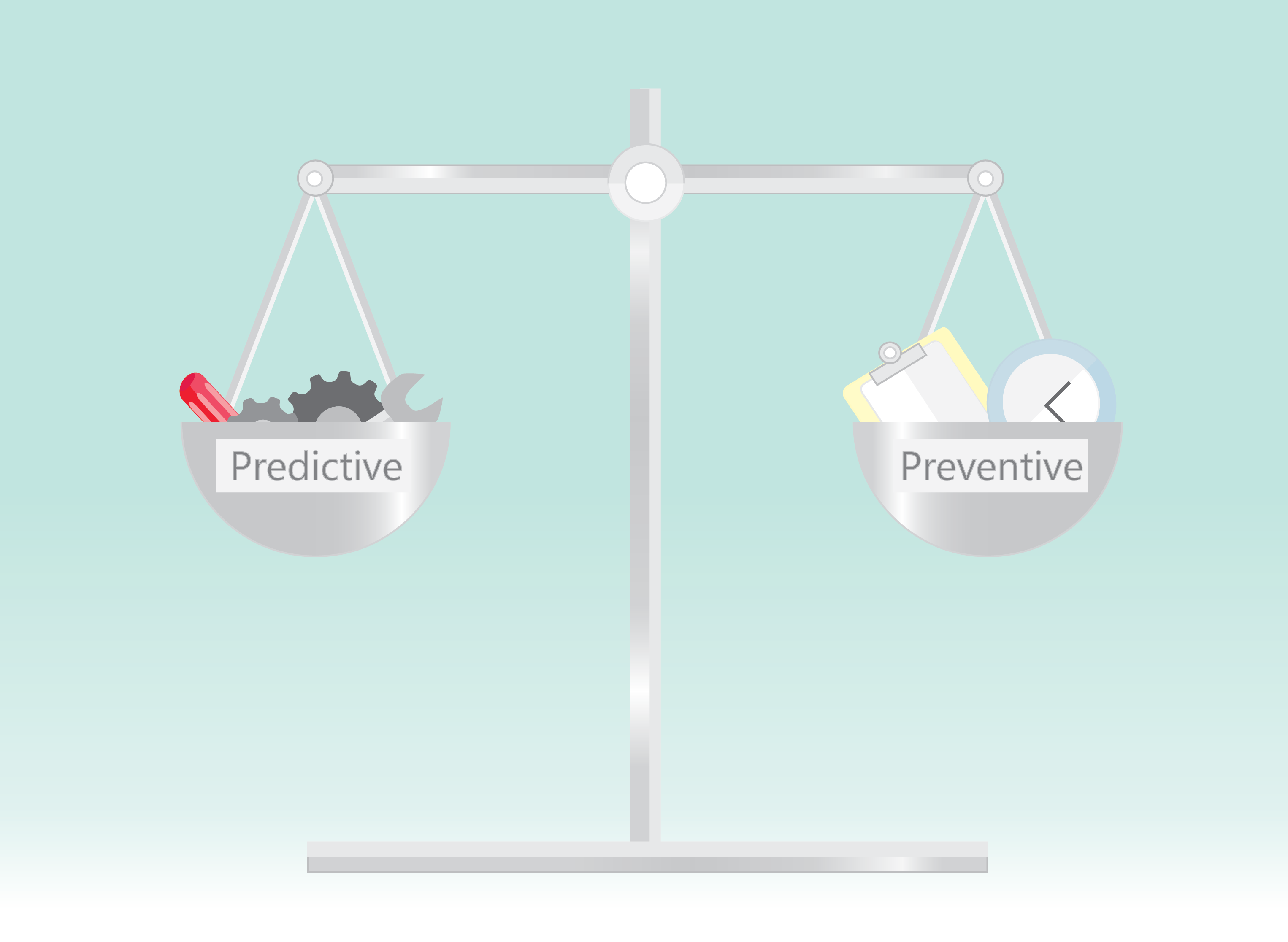In our previous blog, we discussed about reactive maintenance and how unplanned breakdown can cause many problems to your operation . In fact, there are other ways that can help you to save on operational costs. We touched on how a careful maintenance program can help you to save on operational costs.
Today, we will explore two types of maintenance programs:
- Predictive Maintenance
- Preventive Maintenance
Predictive Maintenance (PdM)
Definition:
- A technique designed to help determine the condition of in-service equipment in order to predict when maintenance should be performed. This approach promises cost savings over routine on time-based preventive maintenance because tasks are performed only when warranted.
- Determined by the condition of equipment rather average or expected life statistics.
The benefits of PdM:
- Cost effective: Not only does predictive maintenance reduce equipment costs, it also saves labor costs. Instead of replacing an entire piece of equipment due to a breakdown, a repair is made prior to failure and this minimizes the cost of the equipment. Also, the number of repairs will be greatly reduced and less labor is needed to attend to faulty equipment.
- Predictability: As the name itself suggests, predictive maintenance can anticipate when a failure occurs using data analysis, where technicians can foresee a machinery problem and address them early, therefore reducing unexpected failures and preventing costly downtime.
- Increase asset life expectancy: As repairs are performed when they are needed, predictive maintenance can extend the lifespan of the asset.
A few things to watch out for when implementing PdM:
- The requirement condition–monitoring equipment with the need and the cost to conduct and interpret condition monitoring data and act on the results of that interpretation.
- The requirement of a highly skilled technician to undergo predictive maintenance, such as interpreting condition-monitoring data to ensure the correct technique is performed.
Preventive Maintenance (PM):
Definition:
- From inspection tasks designed to detect impending failures to lubrication and wear part replacement, your PM system is the first line of defense against unplanned downtime and equipment failures.
- Also called planned maintenance or planned preventive maintenance, it is driven by time, meter or event based triggering. In other words, the maintenance is scheduled based on a time or usage trigger. One of the best example that illustrates a usage based maintenance is your motor vehicle, where maintenance service may be required after every 10,000km. An example for a time based maintenance can be an asset, such as washing machine, may need to be scheduled for maintenance every year.
The benefits of PM :
- Expands asset life span: Businesses that take care of their assets with routine checkups allow for better conservation which in turn extend their life cycle.
- Cost effective: Preventive maintenance can also save a lot of money as compared to reactive maintenance. As maintenance are carried out at a fixed and routine schedule, it is so much easier to budget your maintenance plans accordingly.
- Saves energy & resources: Similar to the point above, a fixed maintenance schedule is able to allow proper planning where the efficiency of energy and other resources can be more enhanced.
If you are going to perform PdM, be sure to take note that:
- It does not consider the wear and tear of the asset: An asset that encounter a failure before its routine checkup can cause excessive maintenance.
- A lot of time may be required to carry out a proper schedule and assign tasks.
Understanding the key difference between preventive and predictive maintenance is extremely crucial whereby:
Preventive Maintenance tasks are completed when the machines are shut down while Predictive Maintenance activities are carried out as the machines are running in their normal production modes.
While both maintenance programs are suitable for systems that have a critical operational function, it is important to remember that each maintenance program is not suited for all types of machine. For example, you would not want to implement predictive maintenance on equipment that do not have a failure mode that can be cost-effectively predicted. The same goes for preventive maintenance, whereby it is more suited for machines that have a likelihood of failure or wear and tears that increases with time or use.
In Conclusion
It is no doubt that both predictive and preventive maintenance can increase the life of your assets and save operational costs. However, it is not one size fits all. There is not one maintenance program that fully caters all assets , therefore it is really important to understand what each maintenance program does in order to maximize its utility.
To fully understand the process of maintenance can be testing. At SLSPRO, we have trained technicians who are able to provide more expert advice and help deliver maintenance solutions to you. Our experienced engineers are well-equipped with industry knowledge and can work alongside you and your team to determine the best type of maintenance program for you.







